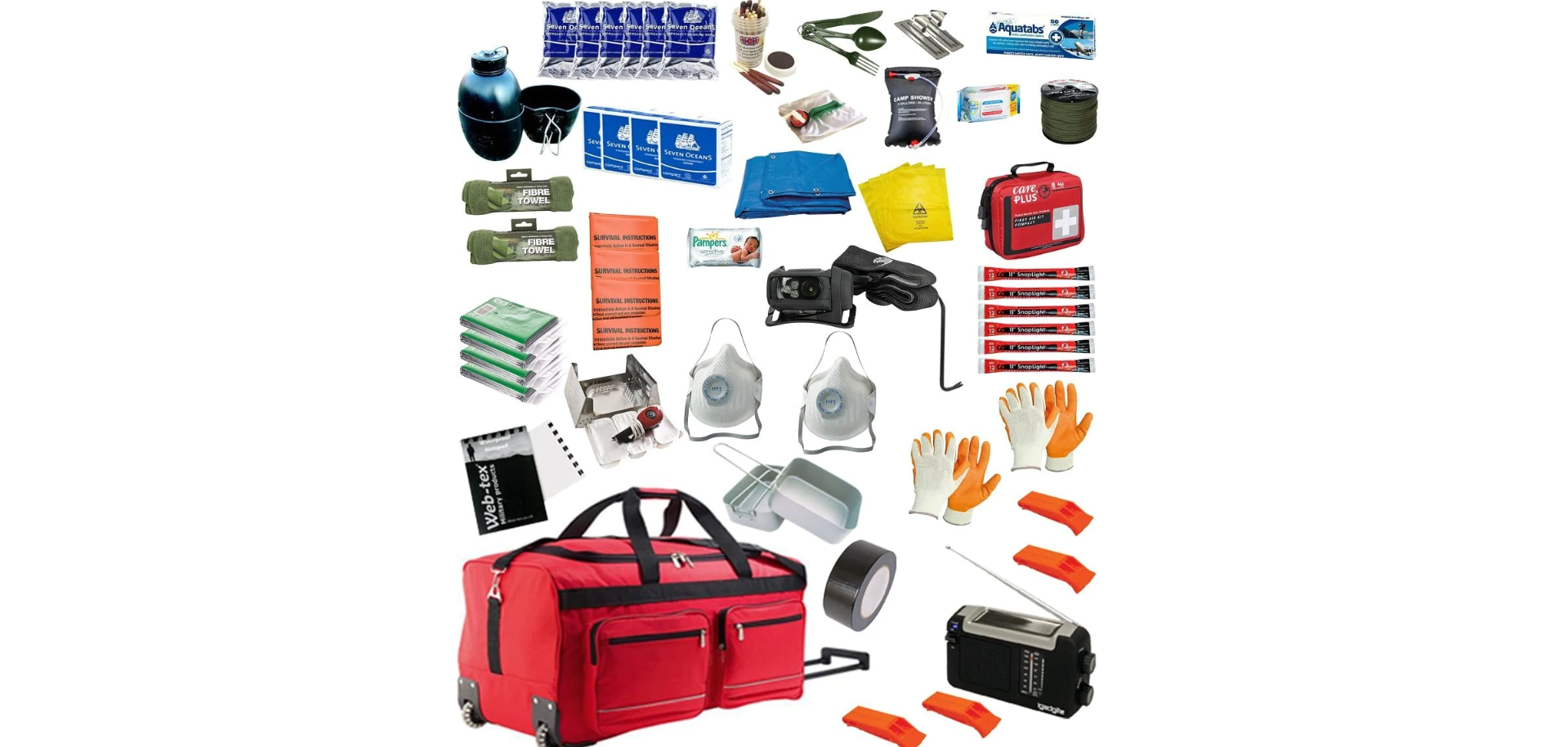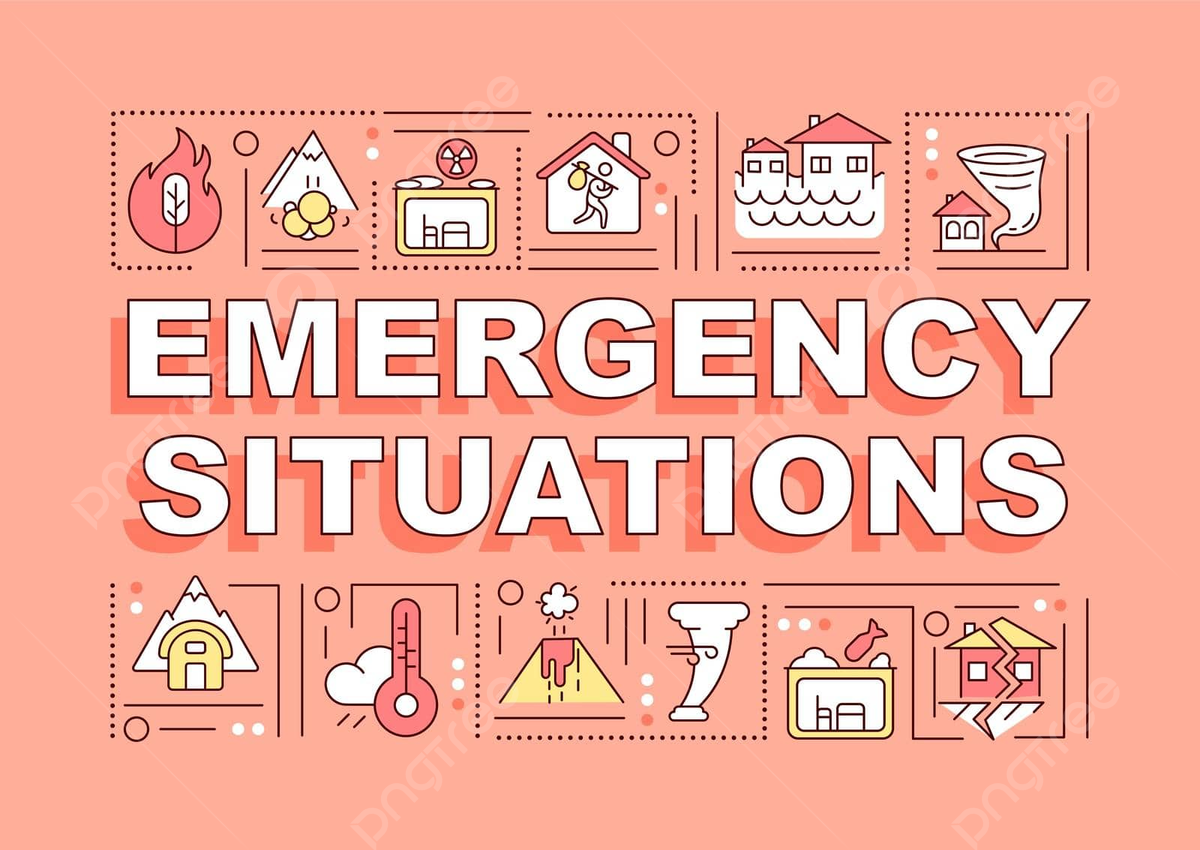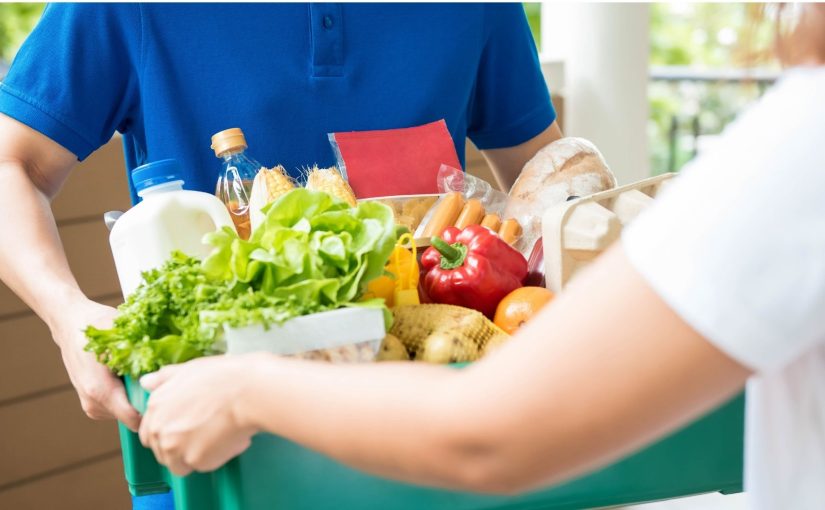In times of uncertainty, securing food becomes a primary concern for many. Whether due to natural disasters, economic downturns, or personal financial troubles, the need for accessible emergency food relief is a reality that can’t be ignored.
It’s not just about having enough; it’s about ensuring what you have will sustain you and your loved ones when the unexpected occurs.
One important aspect to note is The Emergency Food Assistance Program (TEFAP), a federal lifeline supporting low-income individuals through difficult moments by providing essential food assistance.
This blog post aims to guide you through selecting emergency food supplies tailored to various time frames – from 72-hour kits to full-year provisions – while sharing key tips on preparation and storage.
We intend to help you create an actionable plan that secures peace of mind by outlining practical advice and highlighting crucial staples needed in any crisis. Read on for life-saving insights!
Key Takeaways
- Consider building a 3-month, 6-month, or even a 1-year food supply to ensure you have enough non-perishable items for emergencies without spending too much money.
- Look into acquiring survival meals like MREs (Meals Ready to Eat), emergency ration bars, outdoor meal pouches, and freeze-dried food packets, as they offer affordable and long-lasting options for emergency food supplies.
- Essential staples such as water pouches, protein kits, and breakfast provisions are cost-effective yet important items to include in your emergency food supply. These are crucial for ensuring access to clean drinking water and essential nutrients during times of need.
Types of Emergency Food Supplies

Regarding emergency food supplies, having various options can help ensure you are prepared for any situation. From 3-month food supplies to 1-week kits and 72-hour sample packs, different options are available based on your needs.
It’s essential to consider the duration and type of emergency when choosing the right supply for your situation.
3-Month Food Supply
A 3-month food supply means you don’t have to worry when hard times hit. You’re set with foods that last, like dry milk that stays good for up to two years at 70 degrees Fahrenheit.
Store lots of non-perishables that are easy to make. If something bad happens, you have enough food without running to the store.
Keep your pantry filled with essentials so each meal has the necessary nutrients. Think about proteins and vitamins as you pick your stash. This setup gives you a strong foundation for short or even bigger emergencies.
Now let’s look into what might go into a 6-month food supply to keep saving money while staying ready.
6-Month Food Supply
A 6-month food supply is a smart way to prepare for hard times. Think of it like buying insurance – you hope you never need it, but you’ll be glad it’s there if trouble comes. To save money while building this stash, buy in bulk and look out for sales.
Augason Farms often has deals that help new customers start their emergency food supply without breaking the bank.
You want foods that last long and stay good without needing a fridge or freezer. Dry milk from Augason Farms can sit on the shelf for up to two years at normal room temperatures, so it’s perfect for this plan.
Mix and match cans of beans, boxes of pasta, packets of freeze-dried fruits, and jars of peanut butter to cover all your needs. Keep an eye on those date labels; rotate your stock by using older items before they expire and replacing them with fresh ones.
Remember to join mailing lists, too; many brands send exclusive offers that make stocking up cheaper.
1-Year Food Supply
Moving from a six-month to a one-year food supply gives you even more security. It’s like having a savings account for food during tough times. You know that no matter what happens, you’ll have enough to eat for a year.
Canned foods are perfect for this because they stay good without keeping them cold and only need to be refrigerated after opening.
Packing your pantry with canned vegetables, fruits, meats, and beans is smart. This way, if an emergency arises, you won’t stress about meals because your home will be stocked with many choices.
Remember the advice about checking dates and storing cans in a cool spot so they last longer.
Survival food matters when saving money counts. Start collecting items little by little every time you shop, and soon, you’ll build up that one-year stash without feeling it in your wallet too much.
72-Hour Kit Sample Pack
When preparing for emergencies, having a 72-hour kit sample pack is essential. This pack contains non-perishable food to sustain you and your family for at least three days and one gallon of water per person daily.
It is crucial to store foods your family will eat and have enough supply for several days. FEMA provides a checklist to help build an emergency kit filled with necessary items, ensuring you are prepared to survive on your own after a disaster.
A well-equipped 72-hour kit ensures your family’s safety during unexpected situations, whether at home or while traveling.
1-Week Food Supply Ammo Can
When you need a compact, 1-week food supply that’s easy to store and grab in an emergency, the Ready Hour 1-Week Food Supply Ammo Can is your ideal choice. It packs 7 days of disaster meals designed to last up to 25 years when stored properly.
This reliable solution ensures long-term peace of mind at an affordable price, making it perfect for those looking to save money while preparing for unforeseen circumstances.
With its durable design and extended shelf life, this ammo can provide a convenient and cost-effective way to prioritize emergency food preparedness without breaking the bank or compromising quality.
Survival Meals and Kits

Various options for survival meals and kits can provide essential nutrients during emergencies. From Meals Ready to Eat (MREs) and emergency ration bars to freeze-dried food packets and outdoor meal pouches, various survival meals ensure the necessary sustenance when traditional food sources may not be readily available.
MREs (Meals Ready to Eat)
MREs, or Meals Ready to Eat, are a great option for emergency food supply. These pre-packaged meals require little to no preparation and have a long shelf life of up to five years.
This makes them a reliable and cost-effective choice for individuals looking to save money while preparing for emergencies. Additionally, MREs are used by various groups like the military, outdoor enthusiasts, and disaster relief organizations due to their convenience and nutrition.
It’s important to consider including MREs in your emergency food storage plans as they offer a practical solution with minimal hassle.
Emergency Ration Bars
Emergency ration bars are an essential component of emergency preparedness. These compact and highly nutritious bars provide a cost-effective solution for individuals seeking to save money while ensuring they have reliable sustenance during challenging times.
With options ranging from 2400 to 3600 calories, these bars offer a convenient way to meet nutritional needs in various emergencies.
Purchasing emergency ration bars from military or camping supply stores provides individuals with access to well-preserved, long-lasting food options that can be easily stored in basement stockpiles, backcountry kits, or bug-out bags.
Outdoor Meal Pouches
Outdoor meal pouches are a smart choice for anyone saving money on emergency food supplies. These compact, lightweight meals are designed to be non-perishable and can last for at least three days, making them an economical option for long-term storage.
You can find a variety of outdoor meal pouches at military and camping supply stores, offering well-preserved foods suitable for emergency preparedness kits. When choosing the right food items for your emergency kit, prioritize non-perishable options with extended shelf lives.
Now, let’s delve into another crucial aspect of emergency food preparation: Survival Meals and Kits.
Freeze-Dried Food Packets
Freeze-dried food packets are a smart choice for budget-conscious individuals. These packets have a lengthy 30-year shelf life, making them a cost-effective option for emergency food supplies.
They’re lightweight and compact, perfect for 72-hour kits and hiking packs. Although they require extra water for preparation, their practical packaging makes them an efficient solution during emergencies.
These freeze-dried meal pouches provide convenience without breaking the bank, ensuring you’re prepared when disaster strikes or outdoor activities take longer than expected. With their long shelf life and versatile uses, freeze-dried food packets are an economical way to stay ready for any situation without spending much money.
Important Food Staples for Emergency Situations

Water pouches, protein kits, breakfast kits, canned goods, and powders are essential for your emergency food supply. Stocking up on these staples ensures you have the necessary nutrients and sustenance during times of need.
Check out our detailed guide for tips on preparing for emergency food needs!
Water pouches
Water pouches are an essential part of any emergency food supply. They are affordable and suitable for storing water to use in times of need. These pouches come in different sizes, making them convenient for households on a budget.
By having these pouches, you can ensure access to clean drinking water during emergencies without spending much money.
Water pouches are designed for long-term storage with airtight foil bags that keep the water fresh and safe for consumption. This makes them a cost-effective solution for families preparing for unexpected situations without breaking the bank.
Protein kits
Regarding protein kits for emergency food supplies, there are cost-effective options that provide essential nutrients. Peanut or sunflower seed butter and packages of walnuts can offer a good source of protein and fiber while being budget-friendly.
Canned or pouched fish also serve as an economical protein-rich addition to emergency food supplies. It’s important to ensure that your emergency food stocks include these affordable yet nutritious protein options.
Breakfast kits
Regarding saving money in emergencies, breakfast kits play a crucial role. Including whole grain cereals and oatmeal in your emergency food supplies is essential. Also, your breakfast kit should include non-perishable items like whole-grain crackers and bread.
You can save money by purchasing these staples in bulk or during sales. In an emergency, having a ready-to-go breakfast kit can provide comfort and sustenance without breaking the bank.
So, stock up wisely on important breakfast provisions for times of need.
Canned goods
Canned goods are a crucial part of emergency food supplies because they have a long shelf life and are often affordable. They provide essential nutrients and can be used in various recipes, making them versatile for different meals.
Ready-to-eat canned meats, fruits, vegetables, and a can opener are suggested items in your emergency food kit. Stocking up on canned goods gives you access to nutritious foods even during difficult times.
Inexpensive yet filled with nutrition, canned goods are reliable options for those looking to save money while preparing for emergencies. With their extended shelf life and diverse usage possibilities, they offer practical solutions for ensuring food security when unexpected circumstances arise.
Powders (milk, eggs, etc.)
When preparing for emergencies, it’s important to consider cost-effective options. Powdered milk and egg powder are valuable additions to your emergency food supplies, offering essential nutrition at a lower cost.
These powders can be stored for extended periods, providing versatility in meal preparation. In addition, they offer a convenient alternative to fresh milk and eggs during emergencies.
When considering budget-friendly options for emergency food relief, powdered milk, and egg powder are practical choices that ensure both affordability and nutritional value.
Tips for Preparing for Emergency Food Needs

When preparing for emergency food needs, have various options to cover different dietary requirements. Regularly check expiration dates and store supplies in a cool, dry place.
Consider creating a plan for food distribution in case of emergencies. Read on to learn more about ensuring you’re fully prepared for any situation.
Have a variety of options
When preparing for emergency food needs, consider various options to save money. Look for versatile staples that can be used in different meal preparations. For example, rice and beans are affordable and have a long shelf life.
Stock up on canned goods like vegetables, fruits, and soups, as they can provide essential nutrients cheaply. Additionally, consider purchasing items such as pasta, oatmeal, and peanut butter, which are budget-friendly and versatile.
You can ensure cost-effectiveness without compromising nutritional value by having a diverse range of options in your emergency food supply.
Check expiration dates regularly
Regularly checking expiration dates on your emergency food supplies is crucial. Canned foods and dry mixes must be thrown out after a year. Make sure to replace home-canned foods before expiration, and use a permanent felt-tip marker to date all purchased and opened items lacking clear expiration dates.
If you have infant formula stockpiled, always adhere to the expiration dates on the packages. Beyond those dates, physically check your emergency food stash to ensure freshness.
When updating your emergency preparedness kits, meticulously review the expiration dates of all food items and replace anything that has expired.
Consider dietary restrictions
When preparing for emergency food needs, it’s important to consider any dietary restrictions that you or your family members may have. Choosing versatile and budget-friendly options is crucial for people who want to save money while also being prepared.
Canned and shelf-stable fruits and vegetables with low or no sodium can be a great choice for those with dietary restrictions, as they provide essential nutrients while having a longer shelf life.
Additionally, when stocking up on non-perishable items like protein kits and breakfast kits, look for options that align with specific dietary requirements to ensure everyone’s needs are met during an emergency.
Store in a cool, dry place
When storing emergency food supplies, keep them in a cool, dry place. The right storage conditions can increase the shelf life of your canned or dried foods. It’s important to ensure that these supplies are ready for use when you need them most.
This saves money and provides peace of mind if an emergency arises. Maintaining proper storage will ensure that your food will remain safe and secure until it’s needed.
Remember, though – store all emergency food supplies in a cool, dry, dark place to enhance their shelf life and keep them safe from pests and rodents. Certain storage conditions, like cool and dry locations can extend the shelf life of canned or dried foods, making them ideal for emergency food supplies.
Have a plan for food distribution in case of emergency
In times of need, having a plan for food distribution during an emergency is essential. It’s important to consider how you would share and allocate food resources with family, friends, or neighbors if a crisis arises.
Consider setting up a community food-sharing network where each person contributes items to create a communal emergency pantry. This approach can help save money by allowing everyone to pool resources and avoid duplicating purchases.
Additionally, it fosters a sense of cooperation and support within the community.
FAQs

1. What is emergency food relief?
Emergency food relief gives food to people who need it right away because they don’t have enough.
2. Where can I find help if I need emergency food?
You can get help from food banks, local community centers, and some churches when you need emergency food.
3. How can I get emergency food fast?
To get emergency food quickly, contact your local government offices or look for nearby organizations that offer immediate help with free meals.
4. Who helps with giving out emergency food?
Many groups like charities, government programs, and volunteers work together to give emergency aid to those in trouble.

